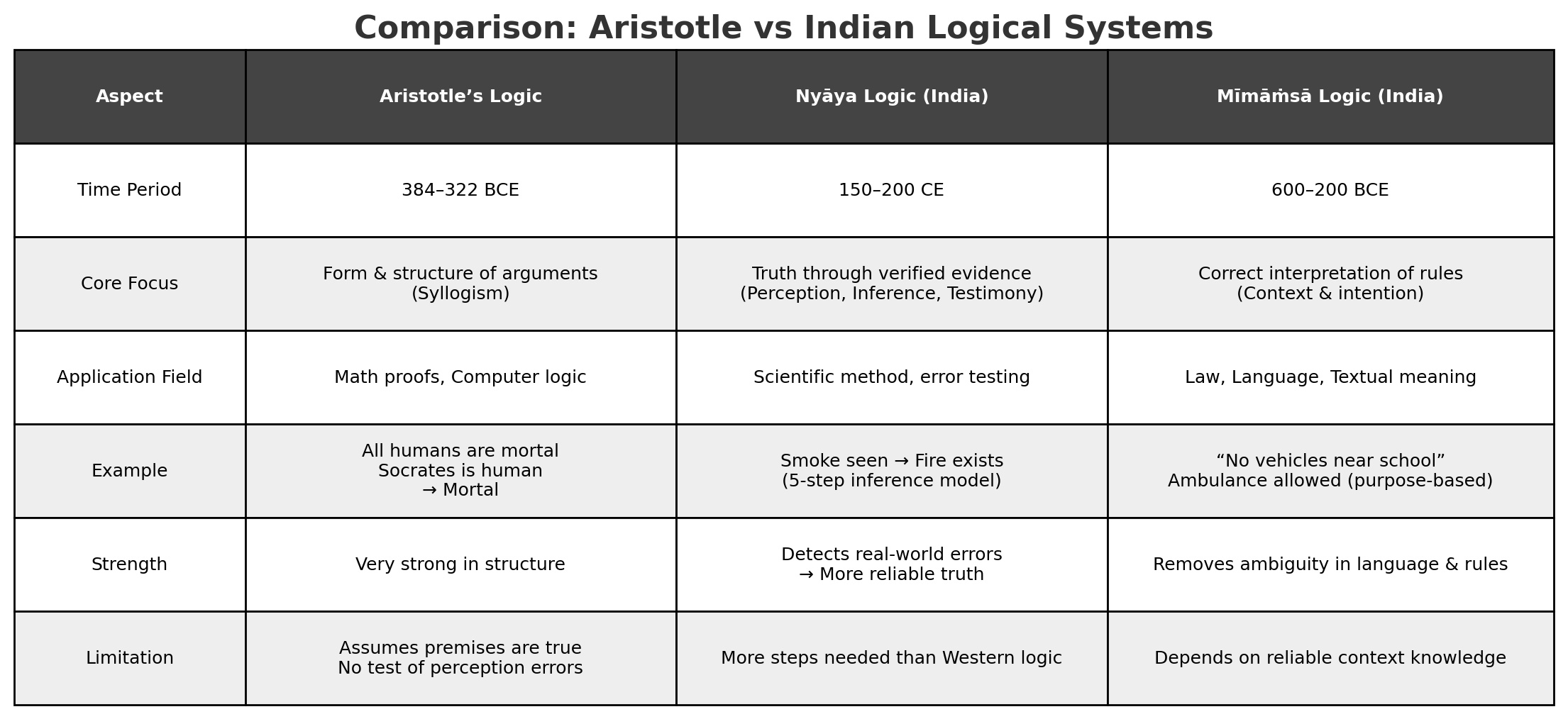Nyaya & Mimaṃsa vs Aristotle: How Budhist Logic Surpassed Aristotle’s System (western logic)
Published on Nov 24, 2025 by Compute Labs

When we talk about “logic,” most schoolbooks begin their story in Greece with Aristotle. But, centuries before and after Aristotle, Indian thinkers built logical systems that were more comprehensive, more psychologically accurate, and closer to the scientific method we use today.
Let’s understand this comparison with simple examples
Aristotle’s Logic: Structure Over Reality
Time: 384–322 BCE
Place: Athens, Greece
Aristotle focused on validity of argument if the structure is correct, the conclusion must follow.
Example
All fruits have seeds.
Mango is a fruit.
Mango has seeds.
This logic powered:
-
Mathematics proofs
-
Computer science (Boolean logic)
-
Western scientific structure
Strength: Strong formal reasoning
Limitation: It doesn’t test truth of the premises or errors in perception.
If someone claims:
All swans are white
This system cannot detect false assumptions.
Indian Logic: Science of Truth, Knowledge & Error
Developed across Northern India (especially Bihar + Gangetic region)
Nyāya — Logic of Finding Truth
Time: 150–200 CE
Place: Bihar/Bengal region
Nyāya asks:
How do we know something is true?
It accepts 4 means of valid knowledge:
-
Perception → You see smoke
-
Inference → Smoke implies fire
-
Comparison → A zebra = like a horse
-
Testimony → Reliable expert/doctor
It uses a 5-step inference:
| Step | Meaning | Example |
|---|---|---|
| Claim | Fire is on the hill | Pratijñā |
| Reason | There is smoke | Hetu |
| Rule example | Smoke from fire, like in kitchen | Udāharaṇa |
| Apply rule | Hill is similar case | Upanaya |
| Conclusion | Fire exists | Nigamana |
Result: You get verified knowledge
not just logical shape.
Mīmāṁsā — Logic of Meaning & Interpretation
Time: 600–200 BCE
Place: North India
Focus:
-
How to interpret rules or sentences correctly
-
Remove contradictions through context and intention
Example for beginners
Signboard says:
No vehicles allowed near school
Mīmāṁsā checks intention:
-
A bicycle? → Vehicle → Not allowed
-
Ambulance? → Protect students → Allowed ✔
→ Apply purpose, not blind rule
Side-by-Side Comparison
| Feature | Aristotle | Nyāya | Mīmāṁsā |
|---|---|---|---|
| Time | 4th century BCE | 2nd century CE | 6th–2nd century BCE |
| Main goal | Structural validity | Truth through evidence | Correct meaning |
| Handles perception errors | ❌ | ✔ | ✔ (context conflict) |
| Real-life science use | Formal proofs | Hypothesis + testing | Law, grammar |
Western system:
“Is the reasoning form valid?”
Ganges region system:
“Is the knowledge itself correct, verified, and meaningful?”
That makes Indian logic superior for discovering truth not just winning arguments.